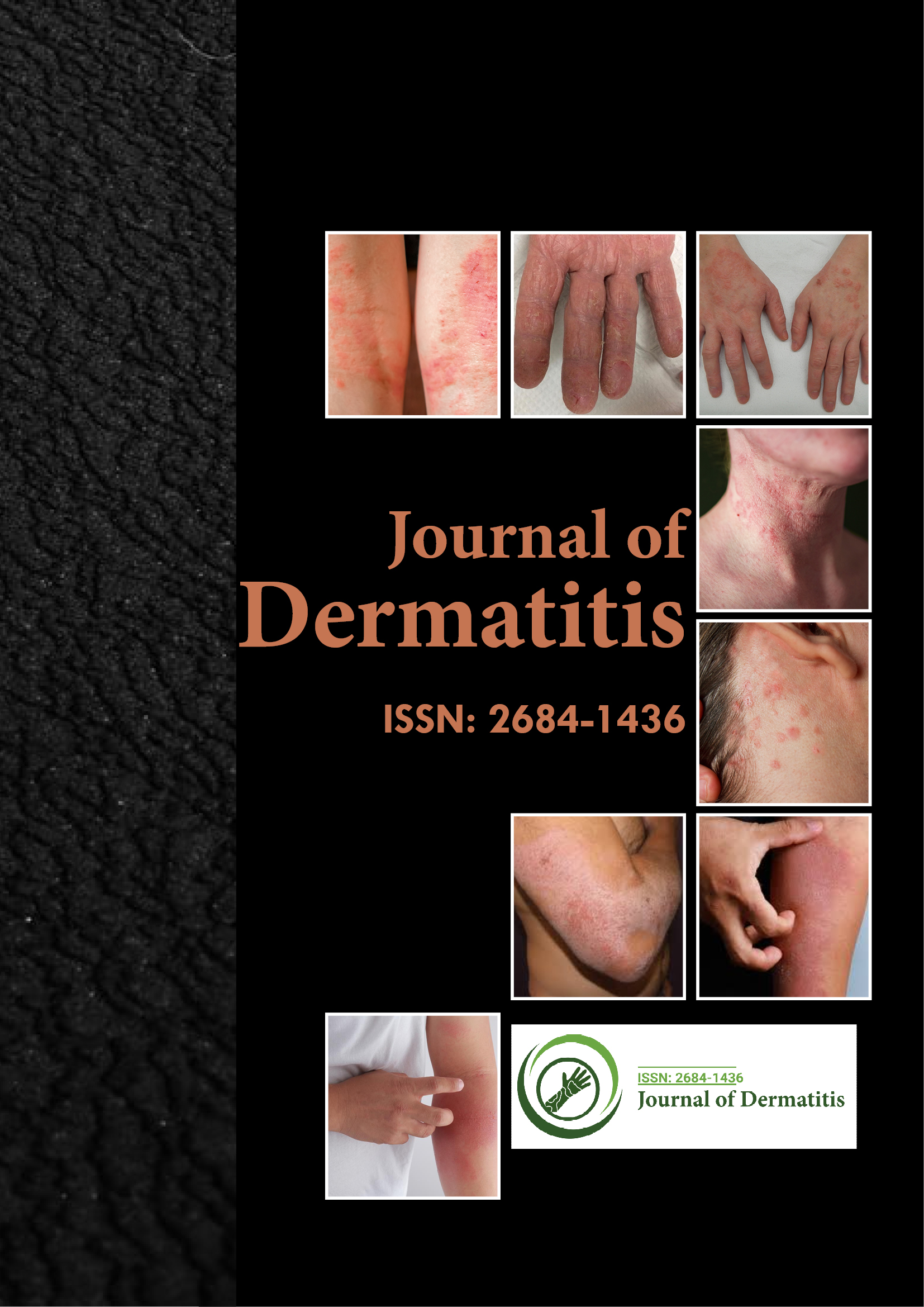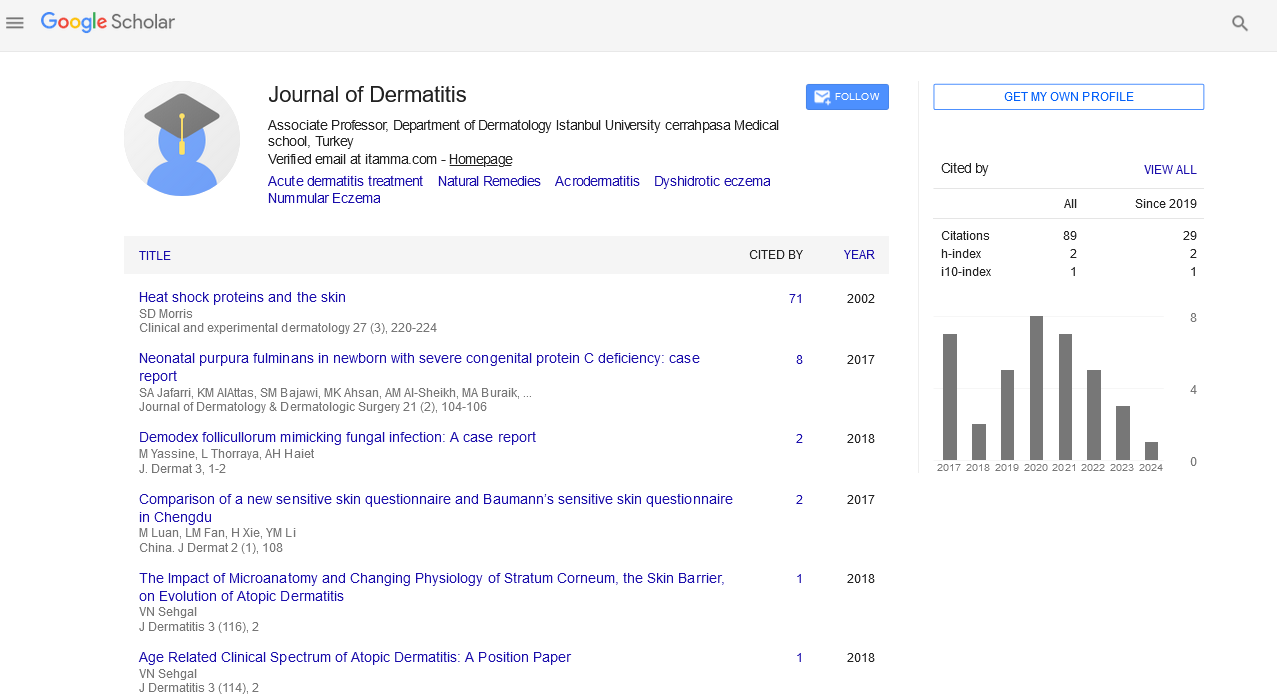Indexed In
- RefSeek
- Hamdard University
- EBSCO A-Z
- Euro Pub
- Google Scholar
Useful Links
Share This Page
Journal Flyer

Open Access Journals
- Agri and Aquaculture
- Biochemistry
- Bioinformatics & Systems Biology
- Business & Management
- Chemistry
- Clinical Sciences
- Engineering
- Food & Nutrition
- General Science
- Genetics & Molecular Biology
- Immunology & Microbiology
- Medical Sciences
- Neuroscience & Psychology
- Nursing & Health Care
- Pharmaceutical Sciences
Opinion Article - (2024) Volume 9, Issue 4
Recognizing Erythroderma and Chronic Lichenification as Adverse Effects of Metformin
Benjamin Carter*Received: 29-Nov-2024, Manuscript No. JOD-24-28250; Editor assigned: 02-Dec-2024, Pre QC No. JOD-24-28250 (PQ); Reviewed: 16-Dec-2024, QC No. JOD-24-28250; Revised: 23-Dec-2024, Manuscript No. JOD-24-28250 (R); Published: 30-Dec-2024, DOI: 10.35248/2684-1436.24.9.250
Description
Metformin, a foundation of medication in the management of type 2 diabetes, has long been renowned for its efficacy, safety profile and metabolic benefits. However, like all drugs, it is not without adverse effects. While gastrointestinal symptoms such as nausea and diarrhea are well-recognized side effects, cutaneous reactions to metformin are rarely reported and even less frequently discussed. Among the spectrum of possible dermatological reactions, erythroderma and chronic lichenification represent severe and underappreciated complications that warrant closer examination.
Erythroderma, characterized by extensive erythema and scaling involving more than 90% of the body surface area, is a risky dermatological emergency. When associated with drug reactions, it typically results from hypersensitivity or idiosyncratic immune responses. Chronic lichenification, marked by thickened, hyperpigmented and pruritic plaques due to persistent scratching, is a manifestation of chronic skin irritation and inflammation. The potential link between metformin and such severe skin conditions raises important questions about the mechanisms of drug-induced cutaneous reactions, the factors contributing to individual susceptibility and the need for heightened clinical awareness.
Although rare, case reports and anecdotal evidence suggest that metformin can induce hypersensitivity reactions, including severe skin manifestations such as erythroderma. The pathogenesis remains speculative but may involve immune dysregulation or an exaggerated inflammatory response. Metformin's role as an immunomodulator is well-documented in diabetes management, where it reduces systemic inflammation and improves insulin sensitivity. Paradoxically, this same property could potentially stimulate an unintended immune activation in certain individuals, leading to severe skin involvement.
The development of chronic lichenification in the context of metformin use may be secondary to pruritus induced by drug hypersensitivity. Persistent itching, particularly when severe and unrelenting, predisposes patients to repeated scratching and subsequent lichenification. This cyclical process not only aggravates the dermatological presentation but also significantly impairs quality of life. For individuals managing chronic conditions like diabetes, the added burden of debilitating skin complications can lead to emotional distress and reduced treatment adherence.
The identification of metformin as the causative agent in such cases is inherently challenging. Diabetes patients often have multiple comorbidities requiring polypharmacy, making it difficult to attribute skin reactions to a single drug. Furthermore, delayed hypersensitivity reactions can occur weeks to months after initiating treatment, complicating diagnosis. A high index of suspicion, combined with a thorough history and clinical examination, is essential for timely recognition and management. Drug rechallenge, though potentially diagnostic, carries significant risk and must be approached cautiously.
From a therapeutic view, the management of metformin-induced erythroderma and chronic lichenification depends on prompt drug discontinuation and symptomatic treatment. Systemic corticosteroids are often required to suppress the inflammatory response in erythroderma, while emollients and antihistamines can provide symptomatic relief for itching and dryness. For chronic lichenification, barrier repair strategies and topical corticosteroids or calcineurin inhibitors may help restore skin stability and reduce inflammation. Transitioning the patient to an alternative antidiabetic medication is critical to maintain glycemic control while minimizing the risk of recurrent skin reactions.
The potential for metformin to induce such severe reactions raises important considerations for clinicians. Despite its rarity, these adverse effects highlight the importance of individualized patient care. Clinicians must remain vigilant for early signs of hypersensitivity, particularly in patients presenting with pruritus, erythema, or other unexplained skin changes. In addition, patients initiated on metformin should be counseled about the potential, albeit low, risk of severe dermatological reactions and encouraged to report any unusual symptoms promptly.
On a broader scale, these cases highlight gaps in our understanding of drug-induced skin reactions, particularly in widely used medications like metformin. The rarity of these events makes it challenging to study their mechanisms and risk factors systematically, underscoring the need for more strong post-marketing surveillance and research. Pharmacovigilance systems must capture and analyze such rare events to improve patient safety and inform clinical practice.
In conclusion, while metformin remains an indispensable tool in the management of type 2 diabetes, its potential to cause severe dermatological reactions such as erythroderma and chronic lichenification cannot be overlooked. Recognizing and addressing these rare adverse effects is essential to ensure patient safety and optimize therapeutic outcomes. As clinicians and researchers, we must continue to balance the benefits and risks of medications, working towards personalized approaches that prioritize the well-being of our patients.
Citation: Carter B (2024). Recognizing Erythroderma and Chronic Lichenification as Adverse Effects of Metformin. J Dermatitis. 9:250.
Copyright: © 2024 Carter B. This is an open access article distributed under the terms of the Creative Commons Attribution License, which permits unrestricted use, distribution, and reproduction in any medium, provided the original author and source are credited.

